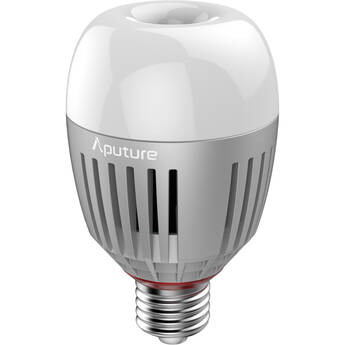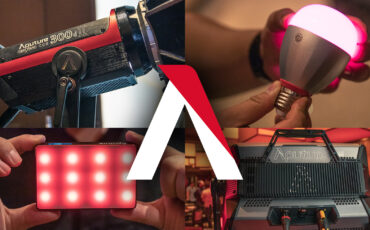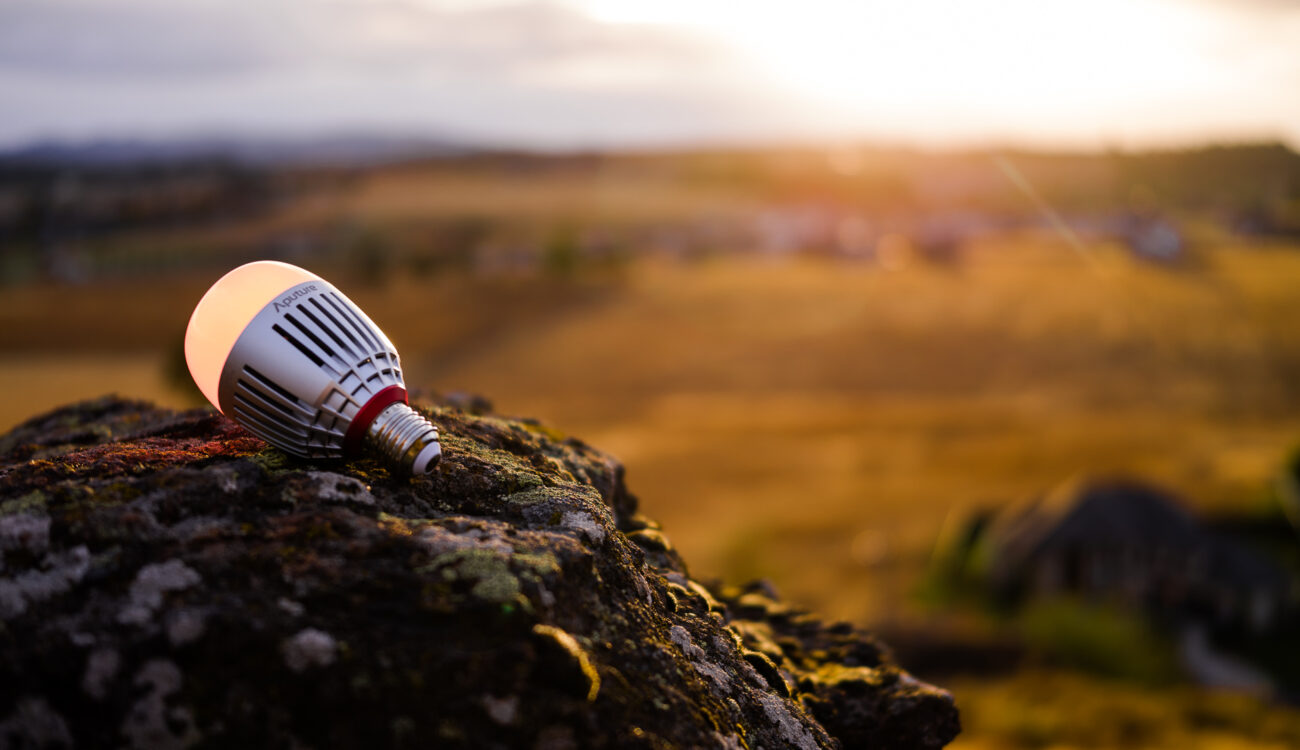
Handling existing lighting features in a location aka “practicals” just became easier with Aputure’s launch of the new B7c bulb (formerly called the “RC”) designed to turn consumer lamps into light sources suitable for professional TV and Film. I took the Aputure B7c bulb into the field for several projects and the full writeup is below.
One of the first things the gaffer team and I do when we arrive at a “real” (as opposed to studio) location is we change out any existing bulbs. Over time home owners and renters change out dying or dead bulbs and they morph into a mishmash of different brands and different color temperatures and the results are pretty ugly on-camera. In the past we would simply have a few high CRI consumer bulbs and swap them to allow for dimming and, at the very least, a consistent look to all the practical lamps in a scene.
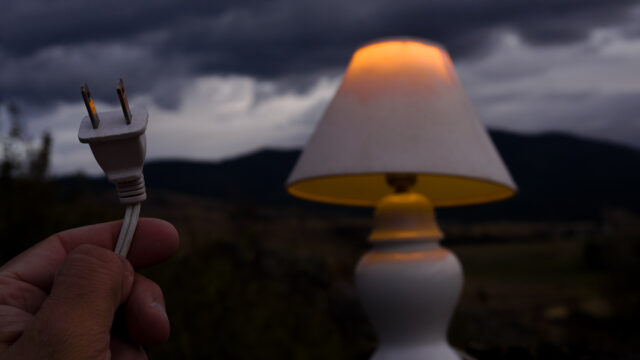
Where things start to become tricky is with dimming or color control from bulb to bulb or with a “gag”. For our purposes I’m defining a “gag” as a flickering light in a horror film or a short circuiting source on a spaceship etc. Every gaffer has their own tricks for accomplishing the above and occasionally a gag might require hiding in an uncomfortable spot just out of the shot — not ideal.
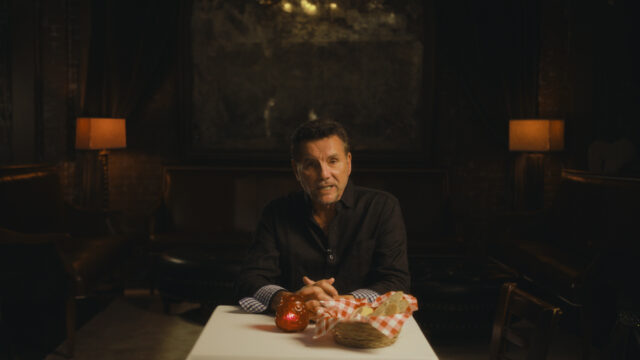
The $70.00 B7c bulb from Aputure solves several problems related to the use of practicals and it can be introduced seamlessly into your on-set lighting workflow. Arrive at a location and swap out all practical bulbs with the B7c and you’re already headed toward a better looking scene with a variety of easily controllable and unified (in terms of color) bulbs.
ARRI Lighting Systems Control
Check out the above shot for a digital branded piece I DP’d for Nerdist.com/2K Games. This was my first time working with two B7c’s and the results look good. The full video shot on Canon C300 MK II/C500MK II and Sigma Cine Primes is below:
In fact, the B7c fits a great niche inAputure’s product lineup and the industry as a whole. For Aputure, this is a small feature packed light that isn’t a square (a la the MC or AL-MX fixture) and one that can be used in tons of scenes where the MC works as an on-cam practical in places like a warehouse set or an airport or in a sci-fi film, but that’s where its usefulness ends in terms of placing it in a “realistic” scene. An MC fixture doesn’t work in a film set in the 1940’s, but the B7c would, for example.
For the industry as a whole you’ll be hard pressed to find a competitor in the filmmaker focused LED bulb category beyond Astera’s new $105.00 NYX bulb. Aputure clearly knows this and they went ahead and put together a head to head chart of the feature breakdown between the Nyx bulb from Astera and their new B7c. Here’s the chart:
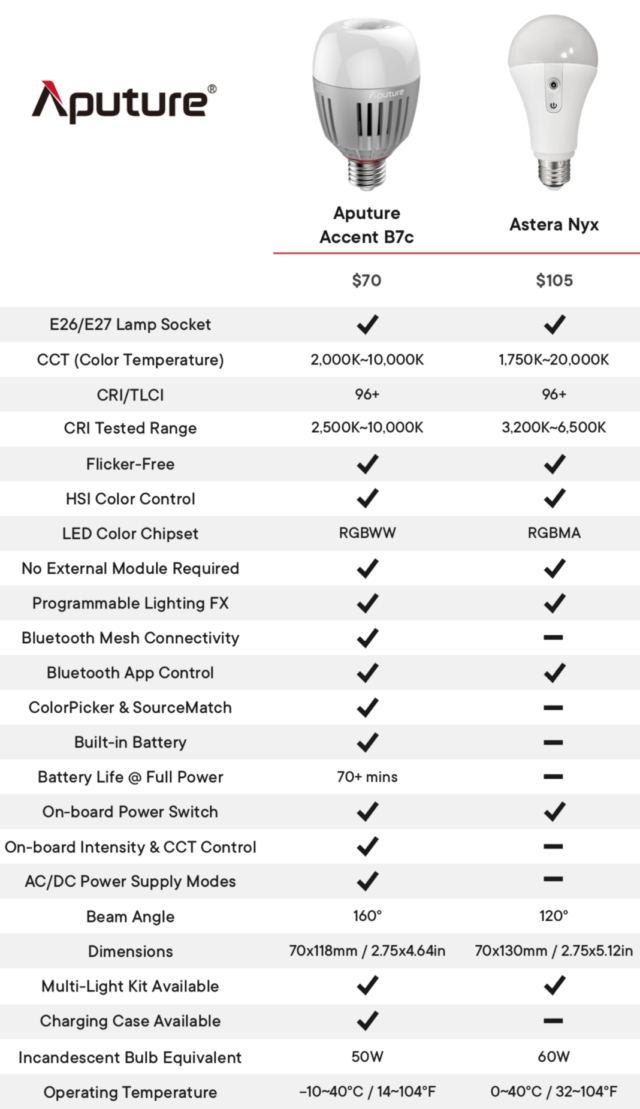
The above chart lays out everything in a straightforward way, but the clear differences between the B7c and the Nyx revolves around the internal battery present in the B7c and the Nyx has a slight output and larger kelvin range advantage. Beyond that, the B7c has a slightly wider beam angle and on-board intensity and CCT control for about $35.00 less.
I find the internal battery does last a little over an hour and it provides for additional creative mounting options. The B7c does tend to get a little hot when placed in a standard E26 or E27 lamp socket and operating at 100% for some time, but it’s nothing like the hand melting Tungsten hot lights of old. Aputure does note that the heat build-up can extend charging times.
In terms of output you’re still working with a 50W Incandescent bulb equivalent here, so for 360 degree steadicam or gimbal shots you will likely need to hide some lighting in the ceiling or outside windows depending on your exposure, but you could certainly key an actor with the B7c if the lamp is placed close enough to your subject. It’s also important to keep in mind the type of lamp shade you’re using in these scenes and you’ll want to work closely with the art department to nail the look/output of a given lamp shade. Testing this before you arrive on location, as always, is important.
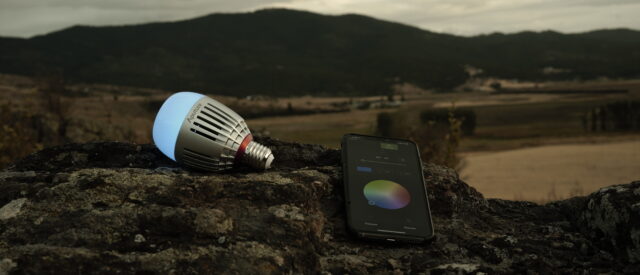
I’ll leave you to decide which bulb is better on paper, but if have already invested heavily into the Aputure ecosystem with Sidus Link bluetooth connected fixtures then it’ll be a hard sell to decide to gravitate to the Nyx bulb at this time. The same is true for Astera — if you already have a bunch of their popular Titan fixtures then the Nyx bulb might make more sense to keep things streamlined while on-location.
Having used both the Sidus Link and the Astra app I’ll say that I personally find the Sidus link app to be a little more intuitive to use out of the gate. Astera also has you purchase a separate $400.00 CRMX transmitter to connect to many of their lights, but the Nyx bulbs do only need bluetooth control — something to keep in mind with that ecosystem.
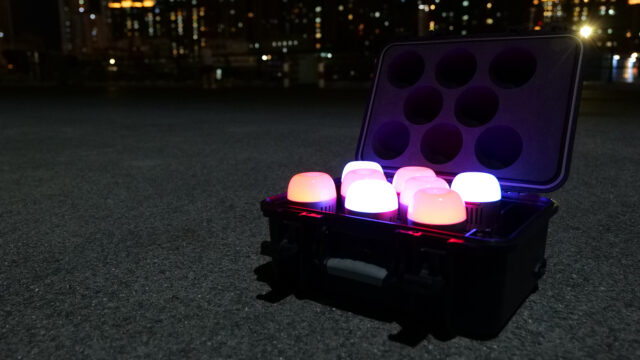
Currently charging is limited to using an available household lamp and charging to 100% takes about 2-hours per bulb. This isn’t an ideal charging solution for every production of course (carrying a house lamp for charging in a G&E van is weird or should they be in the art van?), but Aputure promises an 8-light charging case (pictured above) is coming next year priced at $699.00 in the US. Budget allowing — the upcoming charging case looks like the way to go in my opinion for ease of use from location to location in professional production.
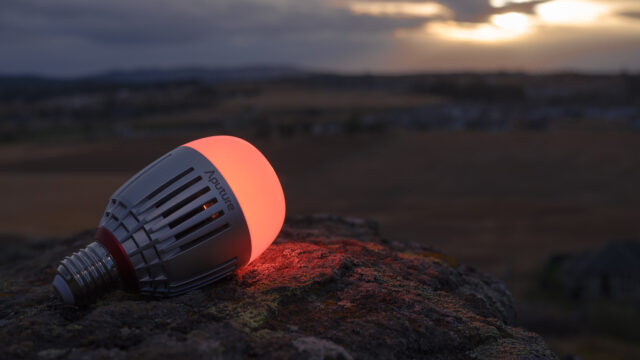
Conclusion:
For the type of work I do the B7c is an easy purchase for me and I plan on being one of the early folks on the pre-order list. Given that this is such a new product category the comparison shopping takes about five minutes and for me, the B7c bulb fits in very well with my existing Aputure fixtures.
**I’ve reached out to Astera and I’ll update here if I’m able to do a head to head comparison with a Nyx bulb.
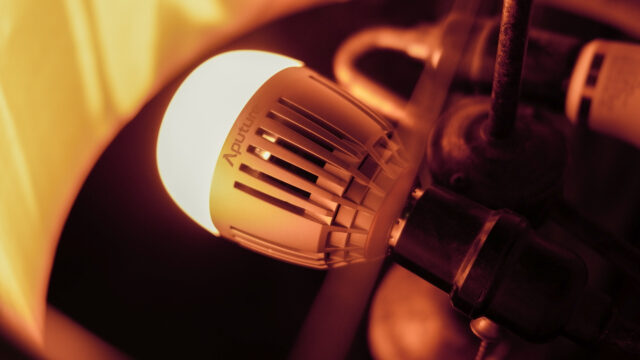
What do you think? Will you be adding the B7c to your kit and why? Let us know in the comments below!



